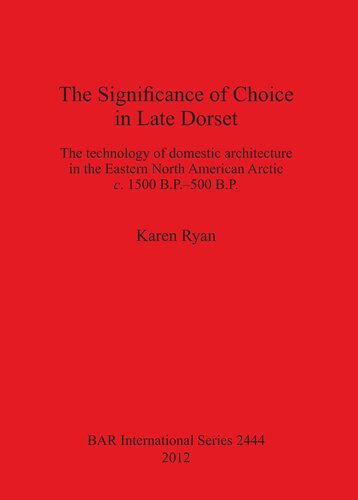

Most ebook files are in PDF format, so you can easily read them using various software such as Foxit Reader or directly on the Google Chrome browser.
Some ebook files are released by publishers in other formats such as .awz, .mobi, .epub, .fb2, etc. You may need to install specific software to read these formats on mobile/PC, such as Calibre.
Please read the tutorial at this link: https://ebookbell.com/faq
We offer FREE conversion to the popular formats you request; however, this may take some time. Therefore, right after payment, please email us, and we will try to provide the service as quickly as possible.
For some exceptional file formats or broken links (if any), please refrain from opening any disputes. Instead, email us first, and we will try to assist within a maximum of 6 hours.
EbookBell Team

5.0
98 reviewsThis study examines the domestic architecture produced by the Late Dorset, an Arctic-adapted hunter-gatherer society which occupied much of the Eastern North American Arctic between circa 1500 B.P. and 500 B.P. Throughout this research, architecture, like any artefact class, is considered a dynamic and socially constructed technology that is produced, maintained, and transmitted by its practitioners. It is replicated via sequences of learned actions or techniques; patterns thus result from adherence to cultural standards while differences represent instances of technological divergence. Such departures are typically ignored or suppressed in closed systems, although they can be tolerated or even widely adopted in more flexible ones. In order to identify and explore patterning in Late Dorset domestic architecture, this analysis adopts a methodological strategy centred on the chaîne opératoire. Viewed through the lens of chaîne opératoire, domestic architecture is treated as a conduit for informing on Late Dorset social structure and organisation. As part of this investigation, a multi-scalar research design was implemented. The first analytical scale examined architecture across the entire Eastern Arctic Palaeoeskimo period in order to recognise regional patterns of behavioural variability. The second stage of analysis focused on the micro-scale study of architectural remains from three locations, each presented as fully contextualised case studies.